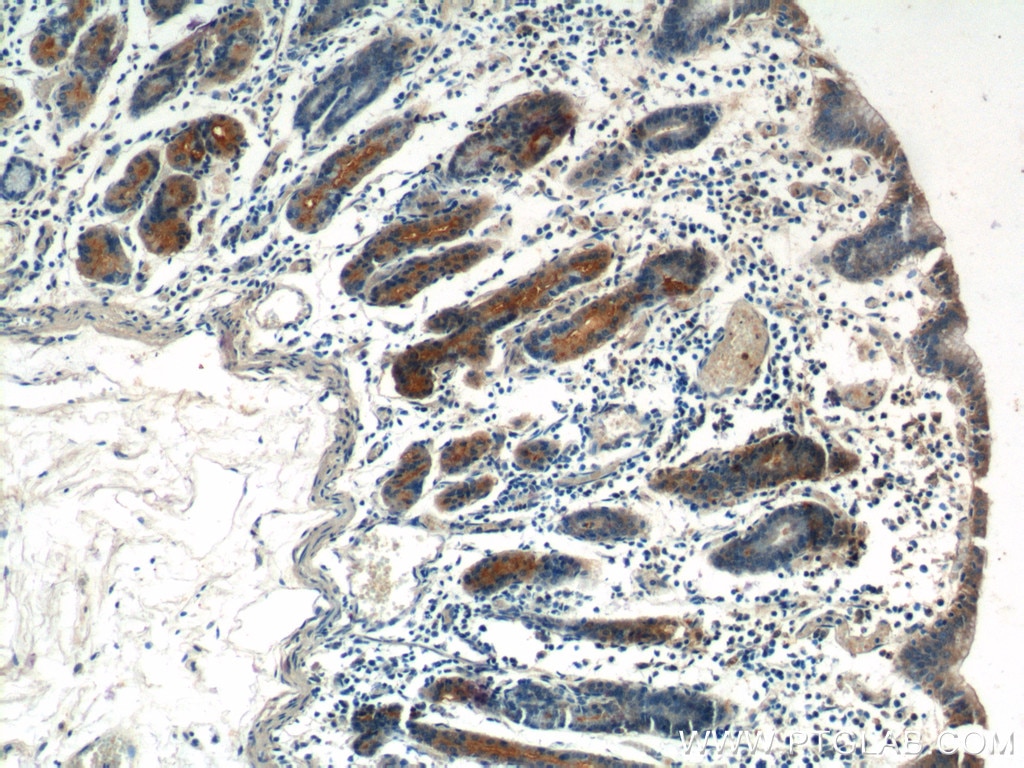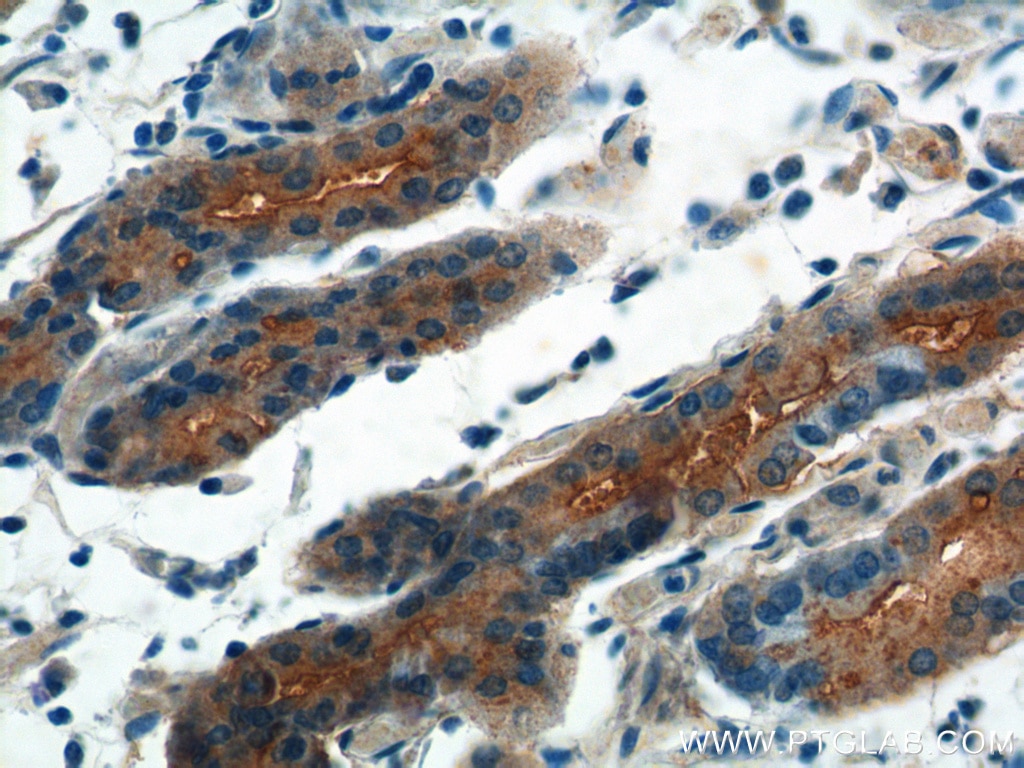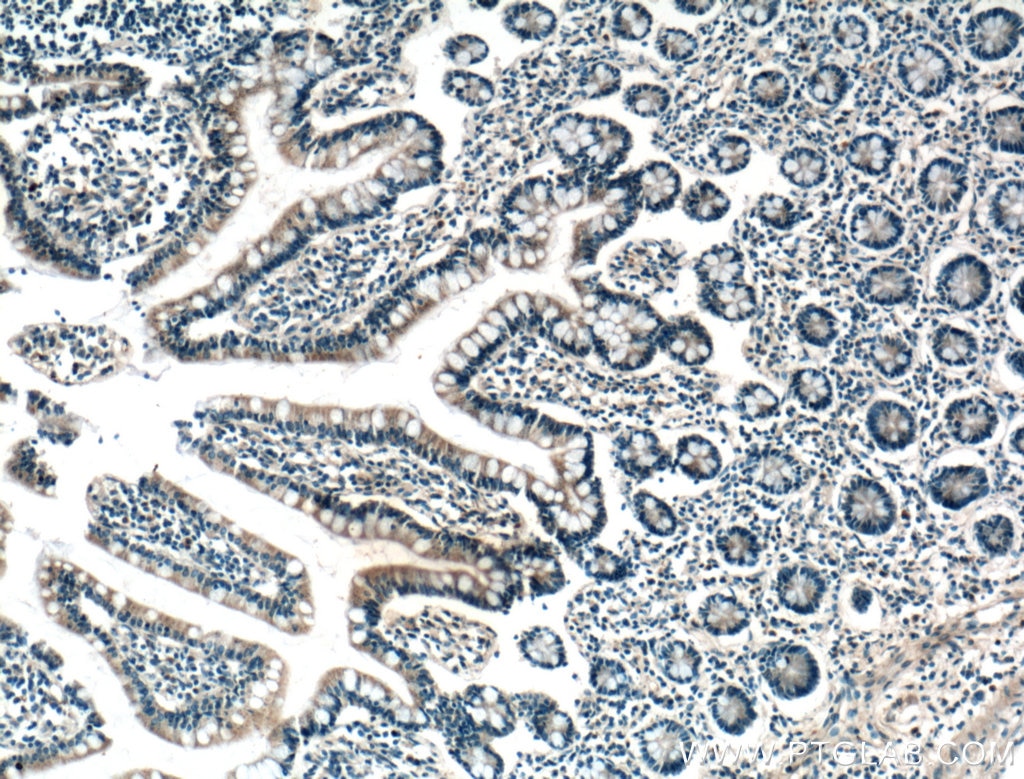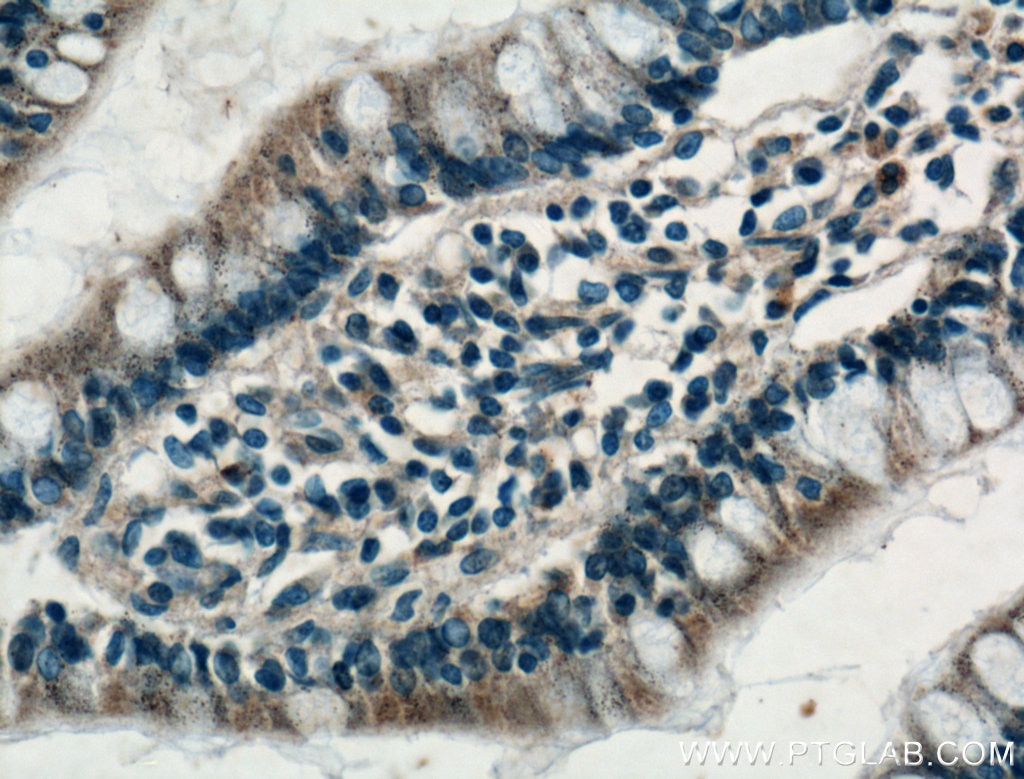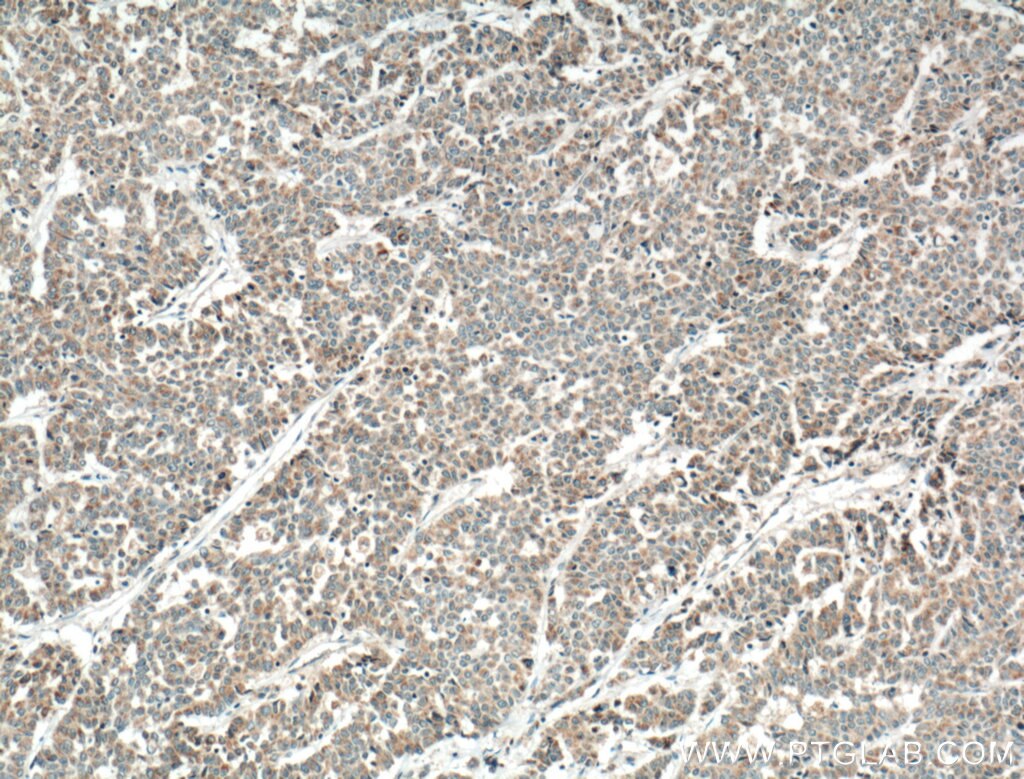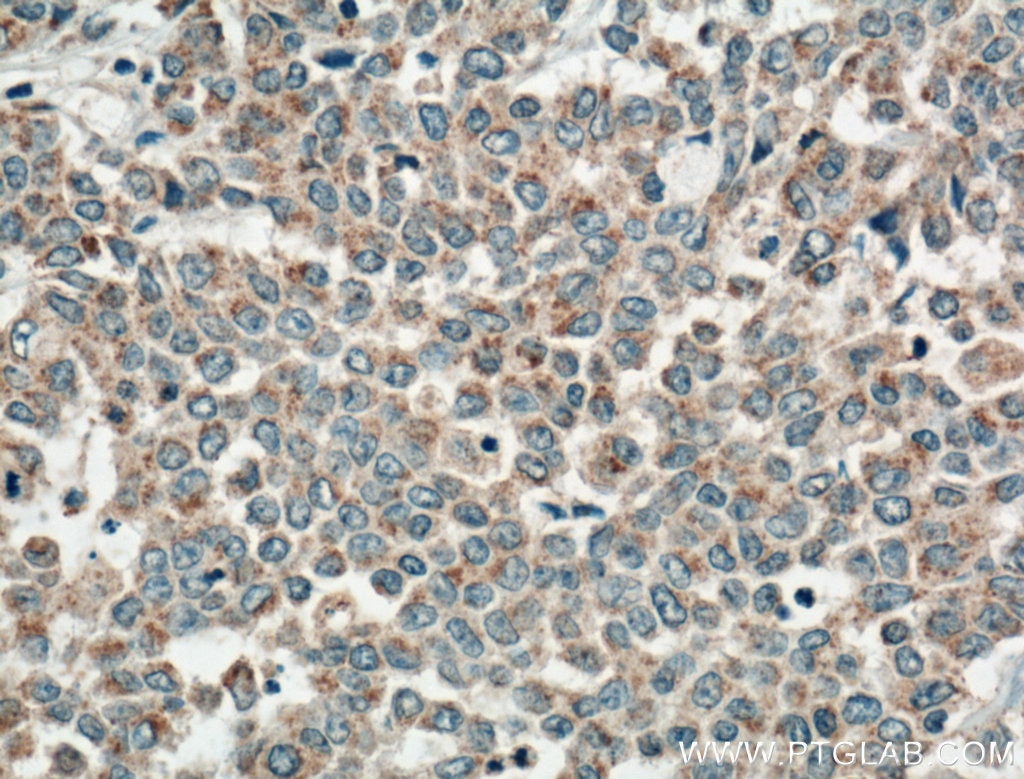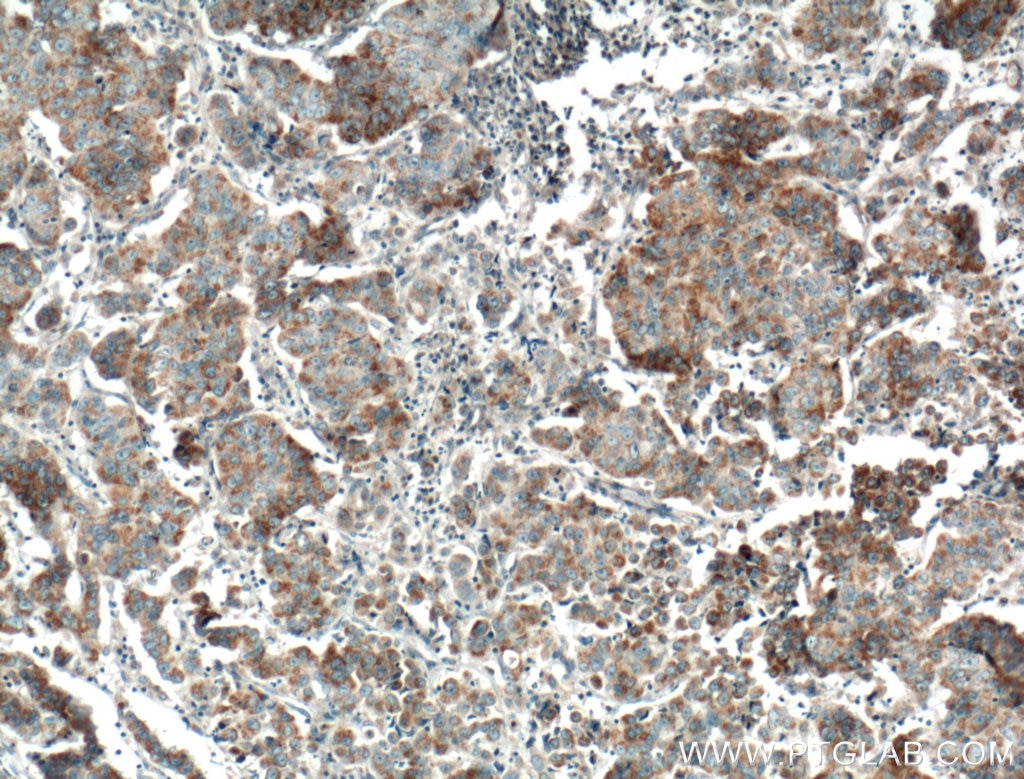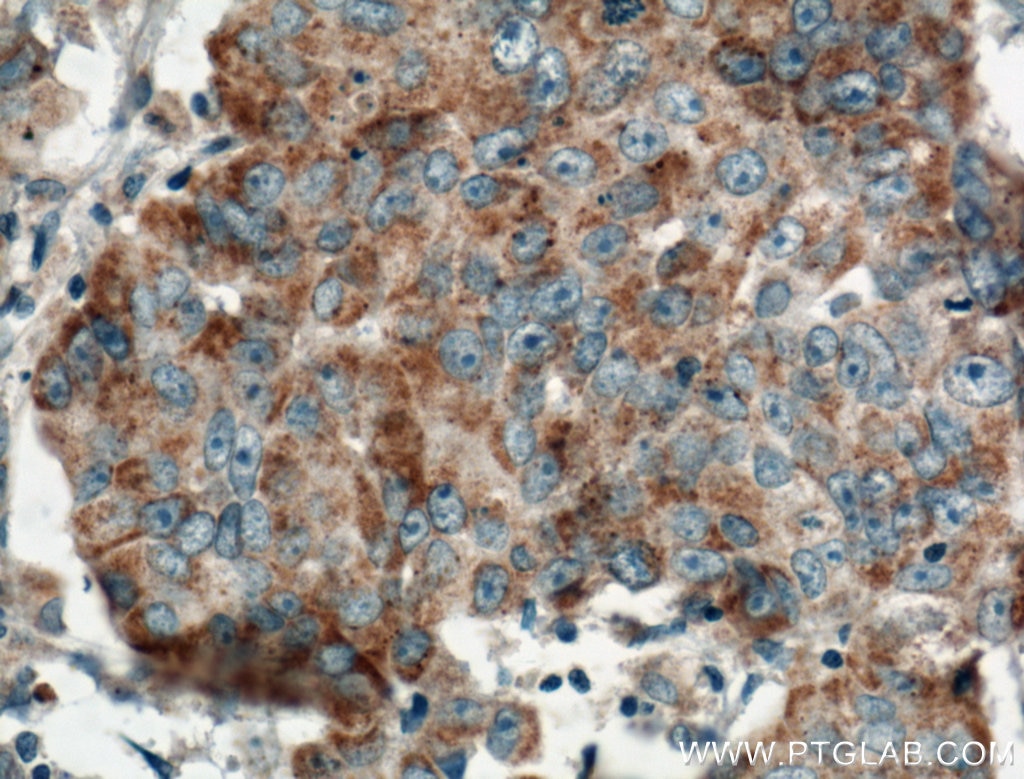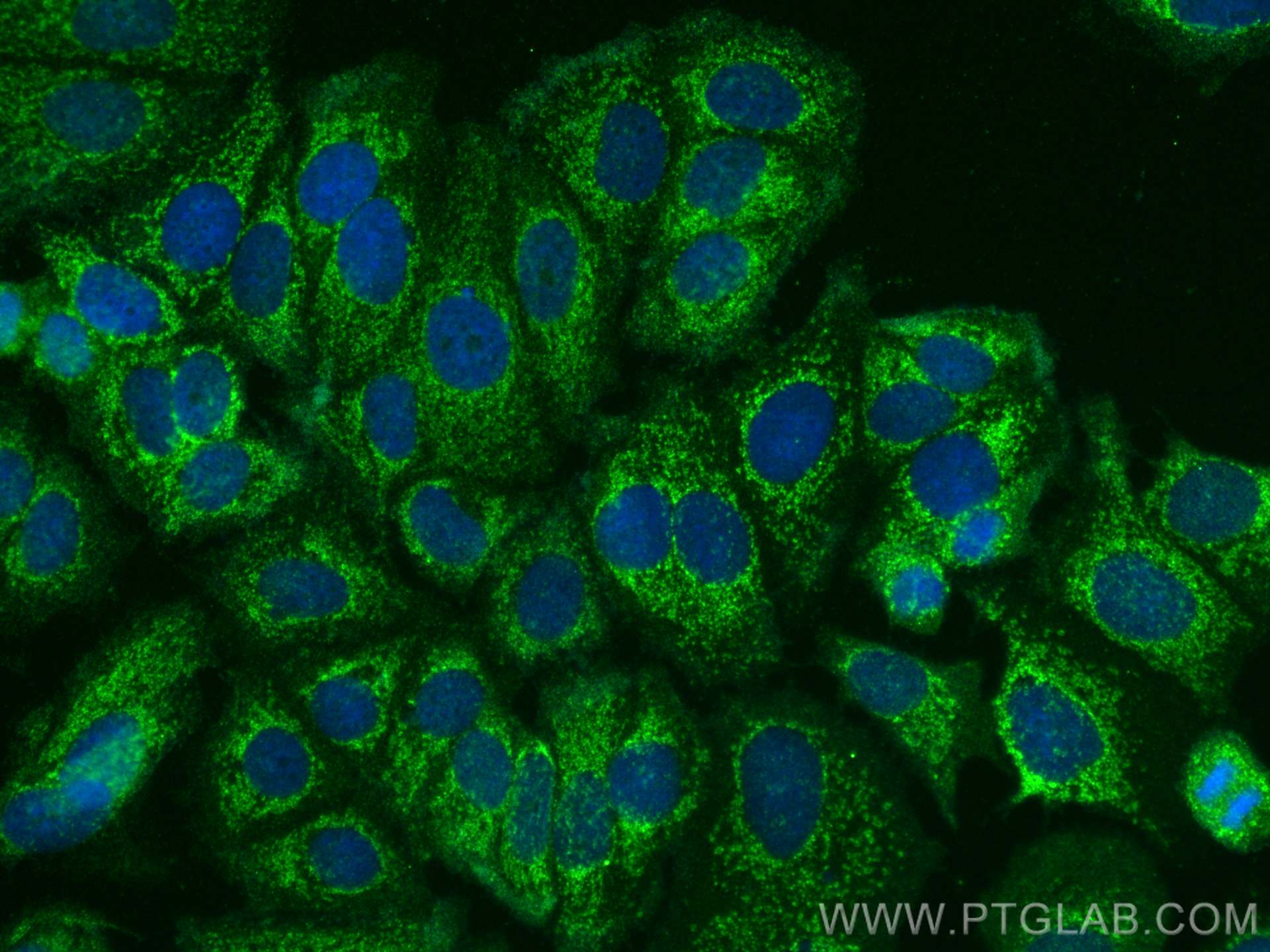FGF9 Polyklonaler Antikörper
FGF9 Polyklonal Antikörper für IHC, IF/ICC, ELISA
Wirt / Isotyp
Kaninchen / IgG
Getestete Reaktivität
human
Anwendung
IHC, IF/ICC, ELISA
Konjugation
Unkonjugiert
Kat-Nr. : 26554-1-AP
Synonyme
Geprüfte Anwendungen
| Erfolgreiche Detektion in IHC | humanes Magengewebe, humanes Kolonkarzinomgewebe, humanes Prostatakarzinomgewebe, humanes Dünndarmgewebe Hinweis: Antigendemaskierung mit TE-Puffer pH 9,0 empfohlen. (*) Wahlweise kann die Antigendemaskierung auch mit Citratpuffer pH 6,0 erfolgen. |
| Erfolgreiche Detektion in IF/ICC | MCF-7-Zellen |
Empfohlene Verdünnung
| Anwendung | Verdünnung |
|---|---|
| Immunhistochemie (IHC) | IHC : 1:50-1:500 |
| Immunfluoreszenz (IF)/ICC | IF/ICC : 1:50-1:500 |
| It is recommended that this reagent should be titrated in each testing system to obtain optimal results. | |
| Sample-dependent, check data in validation data gallery | |
Produktinformation
26554-1-AP bindet in IHC, IF/ICC, ELISA FGF9 und zeigt Reaktivität mit human
| Getestete Reaktivität | human |
| Wirt / Isotyp | Kaninchen / IgG |
| Klonalität | Polyklonal |
| Typ | Antikörper |
| Immunogen | FGF9 fusion protein Ag24244 |
| Vollständiger Name | fibroblast growth factor 9 (glia-activating factor) |
| Berechnetes Molekulargewicht | 208 aa, 23 kDa |
| GenBank-Zugangsnummer | BC069692 |
| Gene symbol | FGF9 |
| Gene ID (NCBI) | 2254 |
| Konjugation | Unkonjugiert |
| Form | Liquid |
| Reinigungsmethode | Antigen-Affinitätsreinigung |
| Lagerungspuffer | PBS with 0.02% sodium azide and 50% glycerol |
| Lagerungsbedingungen | Bei -20°C lagern. Nach dem Versand ein Jahr lang stabil Aliquotieren ist bei -20oC Lagerung nicht notwendig. 20ul Größen enthalten 0,1% BSA. |
Hintergrundinformationen
Fibroblast growth factor 9 (FGF9) is a critically important and elegantly regulated growth factor that was first identified during a screen for factors acting on cells of the central nervous system (CNS). Over the subsequent two decades of research, FGF9 has been revealed to play a significant role in various biological processes. A key feature of its control is reciprocal compartmentalization, particularly during development, with the epithelium serving as a dominant source and mesenchyme as a prime target. This mesenchyme selectivity is achieved through the high affinity of FGF9 to the IIIc isoforms of FGFR1, 2, and 3. FGF9 is widely expressed in the embryo, including in the developing heart and lungs, and more selectively in adult tissues, such as the CNS and kidneys.
Protokolle
| PRODUKTSPEZIFISCHE PROTOKOLLE | |
|---|---|
| IHC protocol for FGF9 antibody 26554-1-AP | Protokoll herunterladenl |
| IF protocol for FGF9 antibody 26554-1-AP | Protokoll herunterladen |
| STANDARD-PROTOKOLLE | |
|---|---|
| Klicken Sie hier, um unsere Standardprotokolle anzuzeigen |
